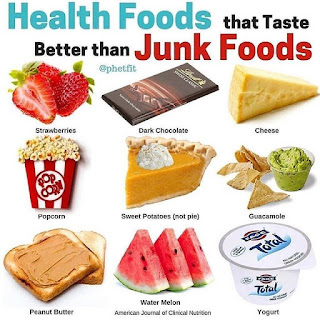
10 Healthy Lifestyle Tips That Will Instantly Boost Your Energy and Well-Being
Let’s face it—living healthy isn’t about perfection. It’s about doing more of what makes you feel energized, balanced, and strong every day. These 10 healthy lifestyle tips are designed to help you take control of your well-being with practical strategies that work.
1. Eat Whole Foods That Nourish Your Body
A clean diet is the foundation of good health. Replace processed snacks with fresh fruits, vegetables, lean proteins, and whole grains. Whole foods fuel your body to function at its best—supporting digestion, immunity, and energy levels.
2. Drink More Water, Less Sugar
Hydration keeps everything in your body running smoothly. Ditch sugary sodas and fruit juices for water. Add lemon or cucumber slices for natural flavor. Aim for at least eight glasses daily, even more if you’re active. Your skin, digestion, and brain will thank you.
3. Move Your Body Every Single Day
We weren’t meant to sit all day. Physical activity doesn’t have to mean hours in the gym. Just 30 minutes of movement can change your day.
– No-Excuse Workouts You Can Do Anywhere
- Walk around the block during lunch
- Do bodyweight exercises at home
- Try 10-minute stretching sessions to stay flexible
Your goal? Just get moving. Exercise lifts your mood, helps you sleep better, and supports heart health.
4. Build a Consistent Sleep Routine
Sleep is your body’s reset button. Stick to a regular sleep schedule—even on weekends. Avoid screens before bed and keep your room cool and dark.
Nighttime Habits That Improve Sleep Quality
- Read a physical book or meditate before bed
- Limit caffeine after 2 PM
- Use blackout curtains and white noise machines
Sleeping 7–9 hours helps with memory, focus, and immunity.
5. Limit Processed Foods and Additives
Processed foods are often loaded with sugar, sodium, and preservatives. These can zap your energy and mess with your metabolism. Cook more meals at home. When you shop, stick to the store’s perimeter where whole foods are stocked. Your body will function better with cleaner fuel.
6. Practice Mindfulness for Stress Relief
Stress is inevitable, but how you respond is everything. Mindfulness helps you stay grounded, clear-headed, and in control.
Simple Practices That Keep You Grounded
- Breathe deeply for one minute every hour
- Take a nature walk without your phone
- Keep a gratitude journal by your bed
These micro-practices reduce anxiety and help you stay focused on what matters most.
7. Avoid Smoking and Minimize Alcohol
We don’t need to tell you that smoking wrecks your lungs and heart. But even social drinking can sneakily harm your liver, sleep, and energy. Try alcohol-free days, and if you smoke, reach out for support to quit. Your body begins healing within hours of quitting.
8. Connect with People Who Lift You Up
Strong social ties are just as important as diet and exercise. Spend time with people who support your growth, make you laugh, and care about your goals. Positive connections, whether family, friends, or an online group, keep you motivated and emotionally strong.
9. Stick to a Daily Routine That Supports Your Goals
A chaotic schedule leads to skipped meals, poor sleep, and less exercise. Set daily routines that serve your goals. Plan meals. Schedule workouts like appointments. Keep a to-do list. Routines build momentum—and momentum builds results.
10. Make Preventive Healthcare a Priority
Don’t wait until something’s wrong. Get annual check-ups. Stay up to date on vaccinations. Check your blood pressure, cholesterol, and other health markers regularly. When you catch issues early, treatment is easier and more effective. Prevention isn’t just intelligent—it’s essential.
Frequently Asked Questions (FAQs)
1. What’s the easiest healthy habit to start with?
Start by drinking more water. It’s simple, affordable, and immediately affects energy and focus.
2. How long does it take to see results from lifestyle changes?
You may notice better energy and mood within a week. For weight, sleep, and other changes, give it 30–60 days of consistency.
3. Can I have cheat days in a healthy lifestyle?
Absolutely. Enjoying a favorite treat or meal now and then keeps life fun and sustainable. Balance is key.
4. How do I stay motivated to live healthily?
Set small goals, track your wins, and surround yourself with supportive people. Don’t aim for perfection—just better.
5. Is it expensive to live a healthy lifestyle?
Not at all. Home-cooked meals, free workouts, and DIY mindfulness practices make it accessible for any budget.
Conclusion: Build a Lifestyle You Love
A healthy lifestyle isn’t about strict rules—it’s about making consistent choices that support your best self. With these 10 tips, you’re adding years to your life and life to your years. Start small, stay consistent, and watch how everything changes for the better.

